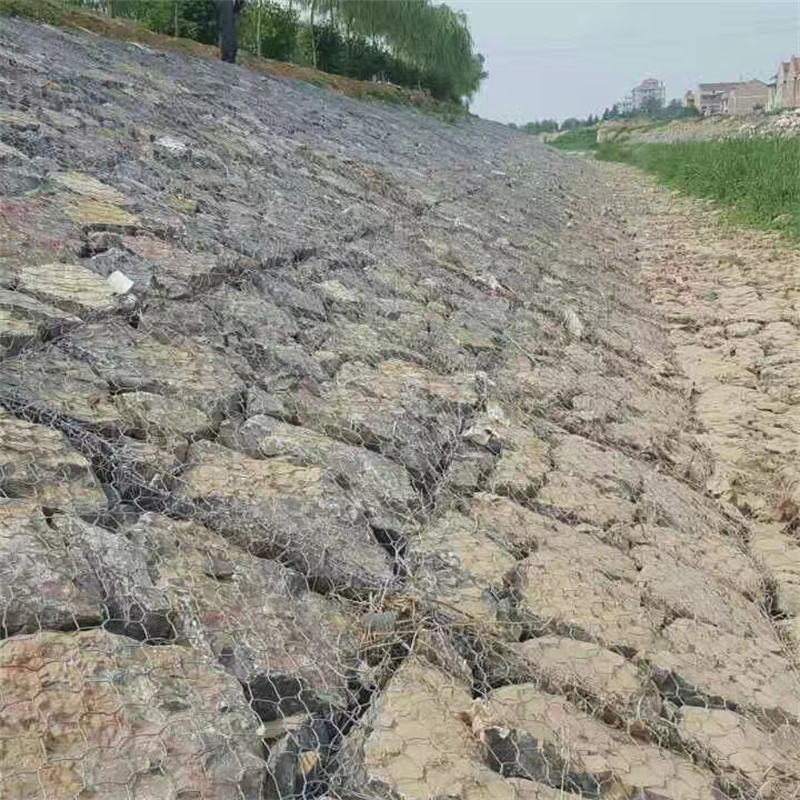Dec . 05, 2024 06:25 Back to list
China Gabion Cages for Effective Retaining Wall Solutions
Understanding Gabion Cages in Retaining Wall Applications
Gabion cages have become increasingly popular in civil engineering and landscaping, particularly as retaining walls. These wire mesh containers filled with rock or other fill materials are an innovative solution for managing soil erosion, providing structural support, and enhancing aesthetic appeal.
What are Gabion Cages?
Gabion cages are typically made from galvanized steel wire or PVC-coated wire, ensuring durability and resistance to the elements. When filled with stones, gravel, or other materials, they create a rigid structure capable of withstanding various forces. The use of these cages as retaining walls is particularly advantageous due to their flexibility and versatility in design.
Advantages of Gabion Cages for Retaining Walls
1. Erosion Control One of the primary benefits of using gabion cages is their ability to control soil erosion. The porous nature of the cages allows for water drainage, reducing water pressure behind the wall. This drainage system helps to lower seepage and prevent the buildup of hydrostatic pressure, which is a significant cause of retaining wall failure.
2. Cost-Effectiveness Compared to traditional retaining walls, such as concrete or masonry structures, gabion cages can be more affordable. They require less labor and material costs and can often be constructed on-site, further reducing expenses. The local availability of filling materials like rocks or recycled construction debris can also contribute to cost savings.
china retaining wall gabion cages

3. Environmental Benefits Gabion walls blend harmoniously with the landscape, making them an eco-friendly option for retaining structures. They can promote local biodiversity by serving as habitats for small animals and plants. Additionally, because they are often filled with local materials, they have a lower carbon footprint compared to conventional building materials.
4. Structural Stability and Flexibility Gabion cages are naturally robust and can adapt to shifting soil conditions. Their flexibility allows them to absorb stress and strain from the surrounding soil, making them less susceptible to cracking or collapsing. This adaptability makes gabion walls a reliable choice for areas prone to ground movement.
5. Aesthetic Appeal Gabions can be designed and filled with materials of various colors, shapes, and sizes, enhancing the visual appeal of landscaping projects. Homeowners and landscape architects can customize gabion walls to suit their design preferences, making them not only functional but also an attractive addition to gardens, parks, and commercial properties.
Installation Process
The installation of gabion cages is relatively straightforward. First, a trench is prepared to ensure that the foundation is stable and level. Next, the cages are assembled and securely filled with the chosen materials. It is crucial to compact the fill material properly to avoid settling. The cages are then stacked and wired together if needed to create the desired height and stability. The process can be completed with minimal machinery, making it accessible for DIY enthusiasts.
Conclusion
Gabion cages provide a practical and sustainable solution for retaining wall applications. Their numerous advantages, including erosion control, cost-effectiveness, and flexibility, make them an appealing choice for various construction and landscaping projects. As more people recognize the ecological and aesthetic benefits of using gabion cages, this innovative approach continues to gain popularity in China and beyond. Whether for functional purposes or decorative elements, gabion cages are undoubtedly reshaping the landscape of retaining wall design.
-
Why PVC Coated Gabion Mattress Is the Best Solution for Long-Term Erosion Control
NewsMay.23,2025
-
Gabion Wire Mesh: The Reinforced Solution for Modern Construction and Landscape Design
NewsMay.23,2025
-
Gabion Wall: The Flexible, Seismic-Resistant Solution for Modern Landscaping and Construction
NewsMay.23,2025
-
Gabion Wall Solutions: The Durable, Decorative, and Affordable Choice for Every Landscape
NewsMay.23,2025
-
Gabion Basket: The Durable and Flexible Alternative to Traditional Retaining Walls
NewsMay.23,2025
-
Gabion Basket: The Proven Solution for Slope Stability and Flood Control
NewsMay.23,2025
-
Versatility of Chain Link Fence Gabion
NewsMay.13,2025






